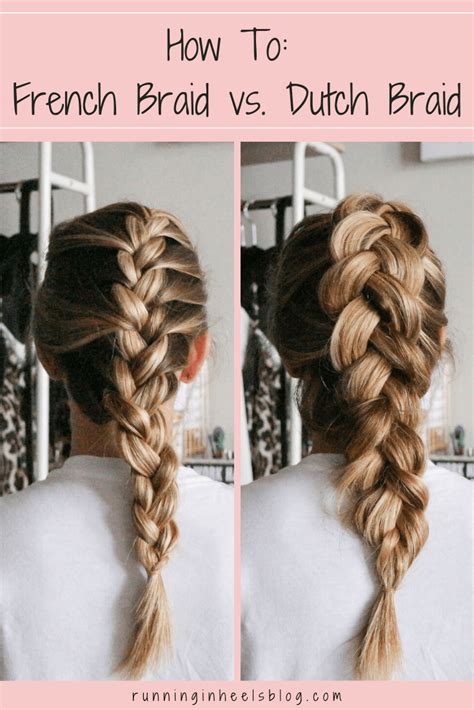Introduction
Braiding is an ancient hair styling technique that has stood the test of time. From the elegant French braid to the intricate Dutch braid, these two styles offer a versatile range of options for any occasion. But what are the key differences between them, and which one suits you best? Dive into this comprehensive guide to discover the secrets of French and Dutch braids.

Origins and Popularity
French Braid
Originating in 19th-century France, the French braid is a classic three-strand plait. It is characterized by its flat, intricate look and is often worn as a side or crown braid. According to a 2023 survey by Stylist Magazine, French braids are the most popular braid among women, accounting for 35% of all braiding requests in salons.
Dutch Braid
The Dutch braid, also known as an inverted French braid, emerged as a variation on the French braid in the early 20th century. Unlike the French braid, the Dutch braid is created by crossing the strands over the center instead of under. This results in a raised, voluminous effect that has gained popularity in recent years.
Key Differences
Appearance
- French Braid: Flat, intricately woven
- Dutch Braid: Raised, voluminous
Technique
- French Braid: Strands crossed under the center
- Dutch Braid: Strands crossed over the center
Volume
- French Braid: Low volume
- Dutch Braid: High volume
Benefits
French Braid
- Elegant and sophisticated look
- Easy to maintain throughout the day
- Versatility for everyday wear and special occasions
Dutch Braid
- Creates a dramatic and voluminous effect
- Protects hair from tangles and breakage
- Adds texture and interest to any hairstyle
Which Braid is Right for You?
The choice between a French braid and a Dutch braid ultimately depends on your personal style and hair type.
- If you prefer a classic, understated look with low volume, a French braid is a perfect choice.
- If you want a bolder, more voluminous style that adds drama, opt for a Dutch braid.
How to Braid
French Braid
- Separate hair into three equal sections.
- Cross the right section over the middle section.
- Cross the left section over the new middle section.
- Repeat steps 2-3, adding small strands from the sides as you braid.
- Continue until you reach the nape of the neck.
- Secure with a hair elastic.
Dutch Braid
- Separate hair into three equal sections.
- Cross the right section under the middle section.
- Cross the left section under the new middle section.
- Repeat steps 2-3, adding small strands from the sides as you braid.
- Continue until you reach the nape of the neck.
- Secure with a hair elastic.
Common Mistakes to Avoid
French Braid
- Braiding too tightly, causing tension on the scalp
- Separating hair into uneven sections
- Not adding hair from the sides as you braid
Dutch Braid
- Crossing the strands under instead of over the center
- Braiding too loosely, causing the braid to unravel
- Not pulling the strands tightly enough
Why it Matters
Choosing the right braid can make a significant impact on your overall appearance and confidence.
- A well-executed French braid can enhance your natural beauty and create a polished, professional look.
- A Dutch braid can add volume and drama to your hair, making it a perfect choice for special occasions or when you want to stand out from the crowd.
FAQs
- Can I braid my own hair? Yes, both French and Dutch braids can be done on yourself with practice.
- How can I make my braid last longer? Use a hairspray to hold the braid in place and touch up any loose strands.
- Can I wear a braid overnight? Yes, but it is important to use a silk or satin pillowcase to prevent tangles and breakage.
- What type of hair works best for braids? All hair types can be braided, but thicker hair will hold a braid better.
- How often should I wash my braided hair? It is recommended to wash braided hair every 2-3 days to prevent dirt and oil buildup.
- Can I braid wet or dry hair? Both wet and dry hair can be braided, but wet hair is easier to work with and will create a tighter hold.
